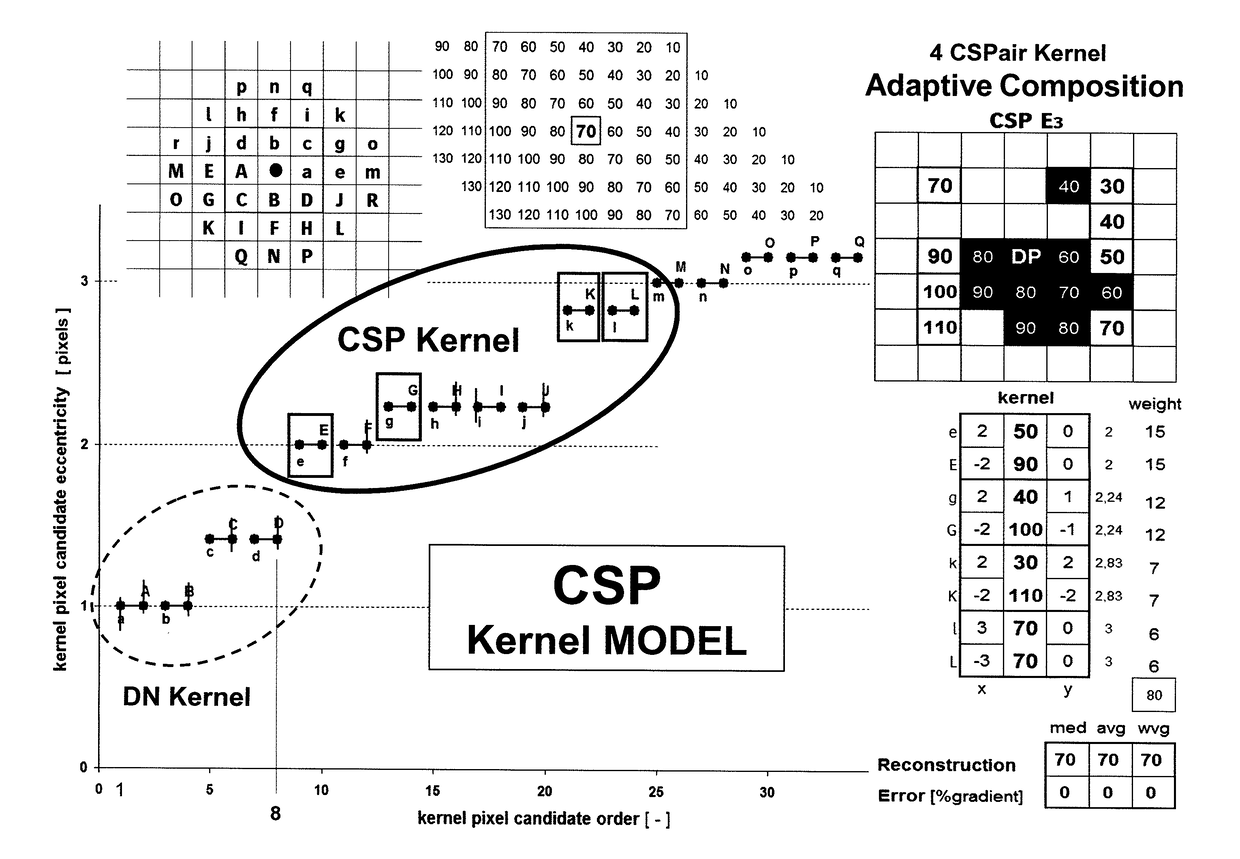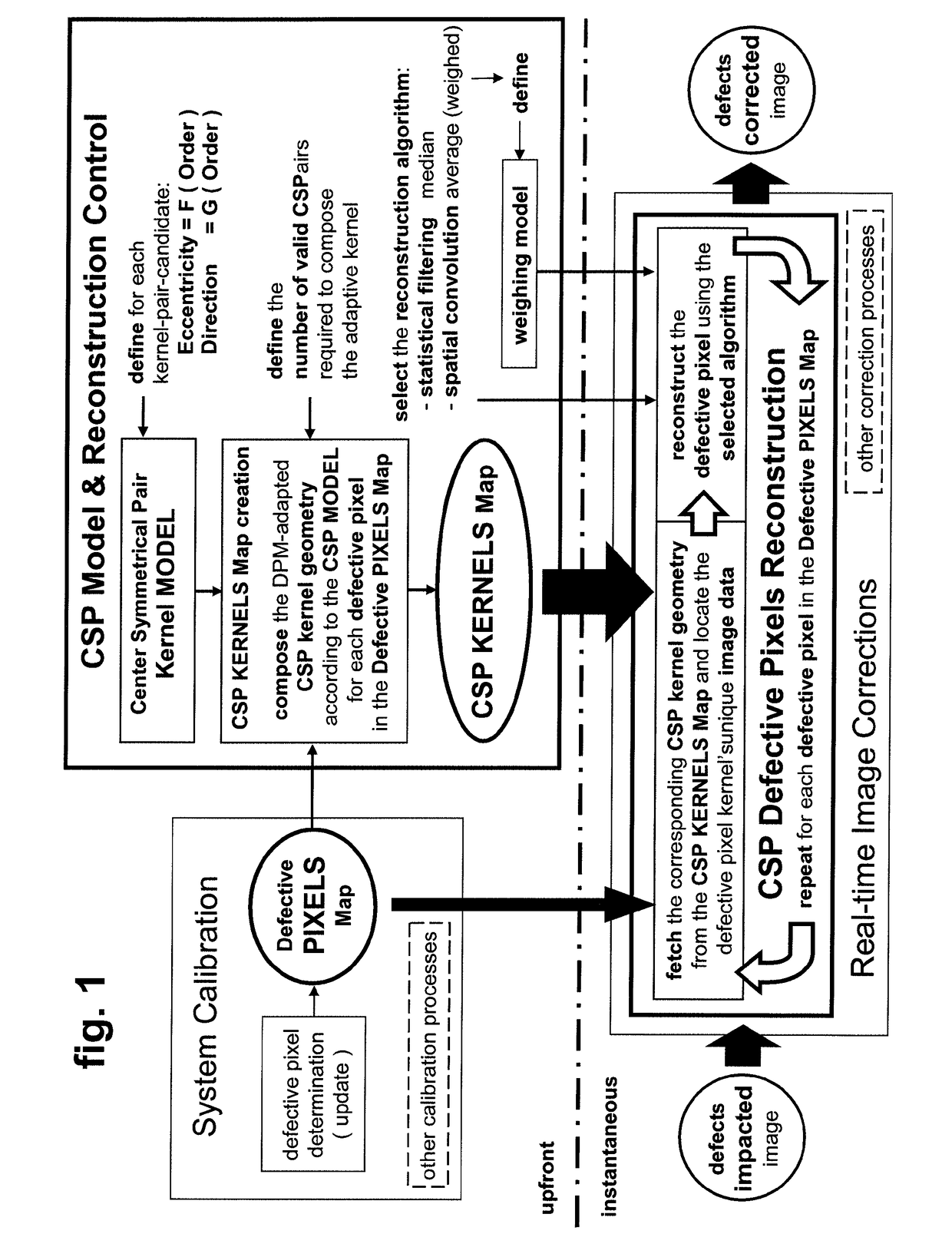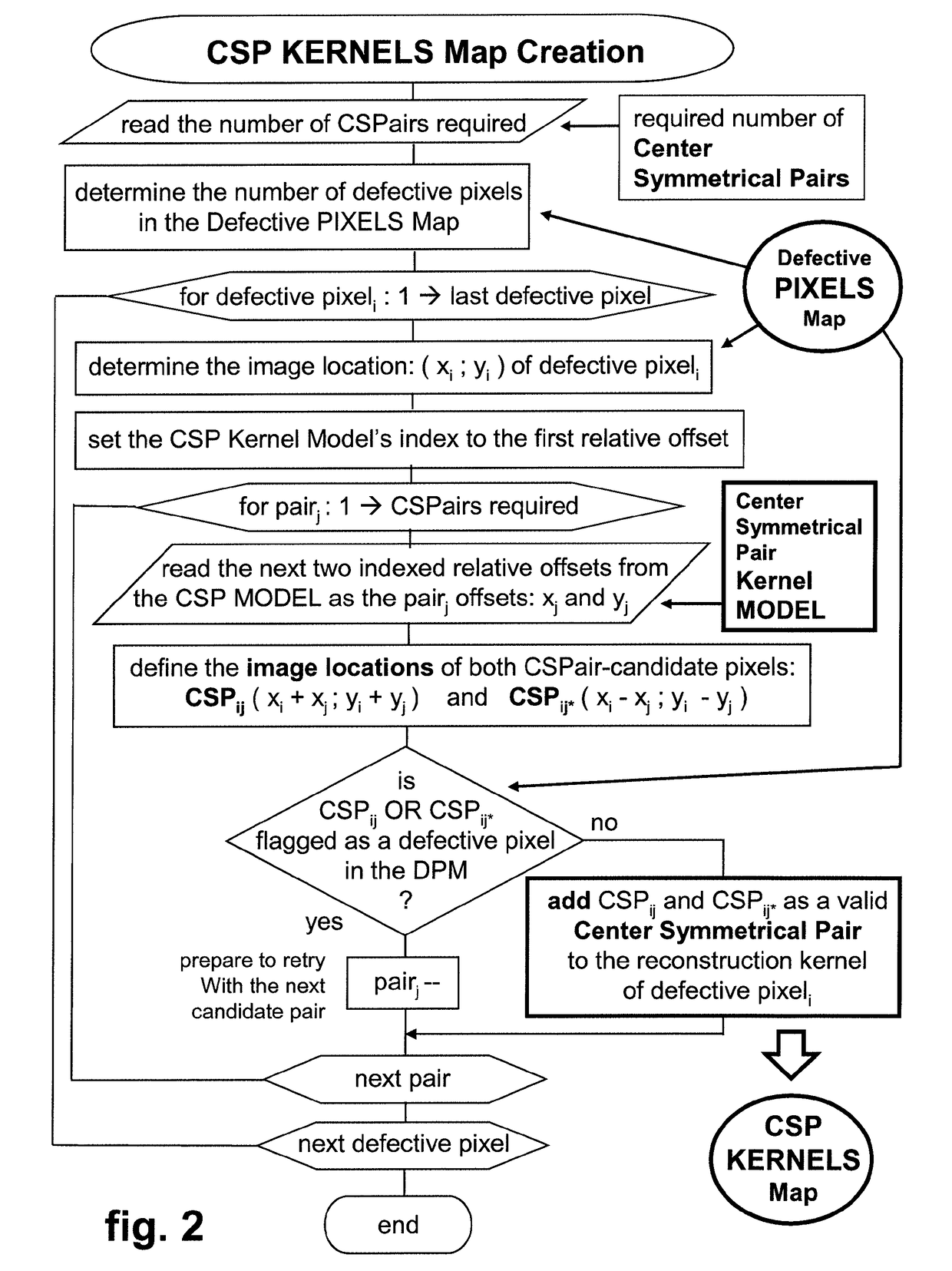Method for correcting defective pixel artifacts in a direct radiography image
a technology of defective pixels and radiography, applied in the field of direct radiography, can solve the problems of defective pixels, unreliable sensor-pixels, non-representative image data, etc., and achieve the effect of reducing disturbing or missing image impact, improving workflow and visual inspection quality
- Summary
- Abstract
- Description
- Claims
- Application Information
AI Technical Summary
Benefits of technology
Problems solved by technology
Method used
Image
Examples
Embodiment Construction
[0049]An x-ray or light sensitive array-sensor, a crucial opto-electronic component of each flat panel detector system, acts as a planar transducer which converts the spatial distribution of the time-integrated impinging x-ray radiation captured at pixel resolution into a set of digital data which can be exported as an uncorrected image.
[0050]To be able to do this the large-area array-sensor is often built up as a stack of contacting and or fused layers.
[0051]A scintillator material arranged at the radiation entry side of the detector is used as a first layer to convert impinging x-rays into emitted light.
[0052]The electronic array-layer consists of photo-sensitive pixel-elements like reverse biased PIN diodes which convert the locally impinging emitted light into electric charge carriers which can be captured during time integration and locally stored in the pixel as an x-ray exposure representative charge-package.
[0053]A third layer carries a vast array of electronic switches used...
PUM
 Login to View More
Login to View More Abstract
Description
Claims
Application Information
 Login to View More
Login to View More - R&D
- Intellectual Property
- Life Sciences
- Materials
- Tech Scout
- Unparalleled Data Quality
- Higher Quality Content
- 60% Fewer Hallucinations
Browse by: Latest US Patents, China's latest patents, Technical Efficacy Thesaurus, Application Domain, Technology Topic, Popular Technical Reports.
© 2025 PatSnap. All rights reserved.Legal|Privacy policy|Modern Slavery Act Transparency Statement|Sitemap|About US| Contact US: help@patsnap.com



